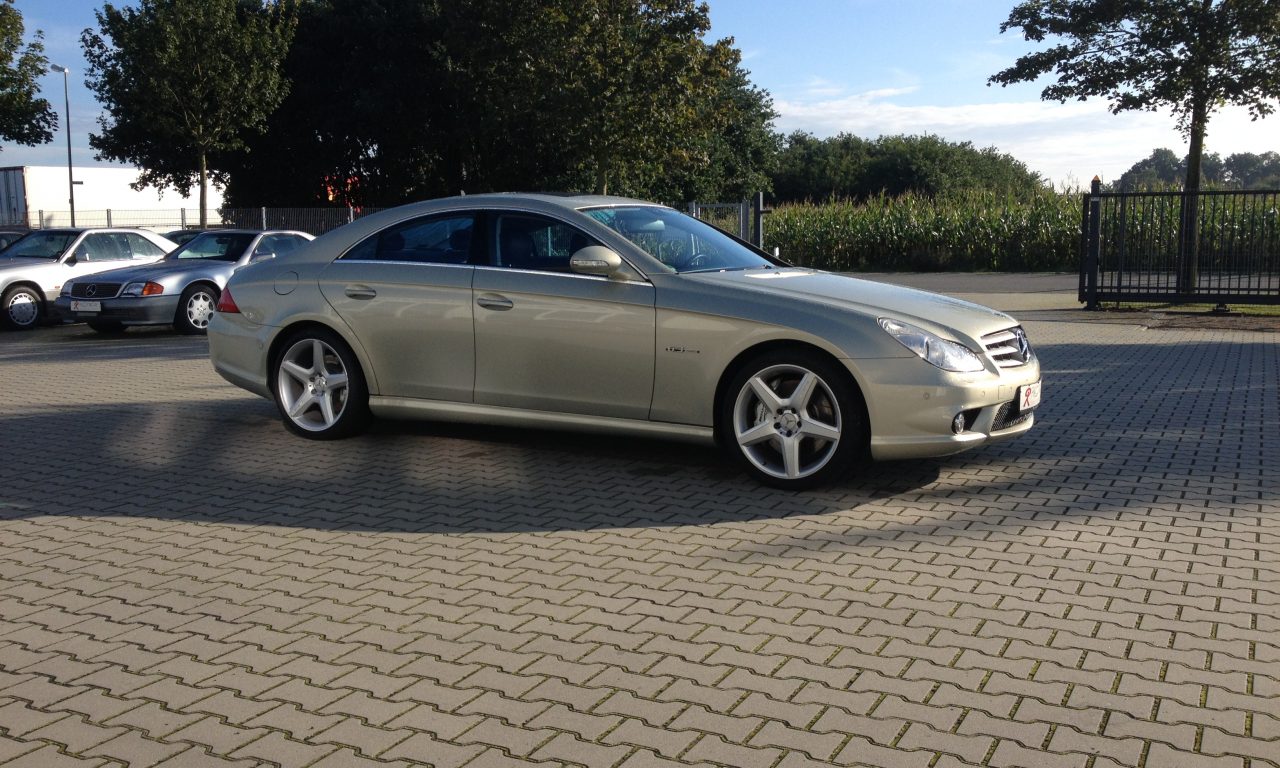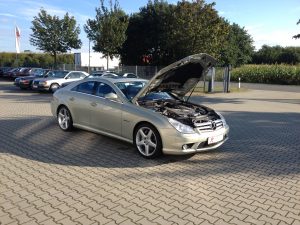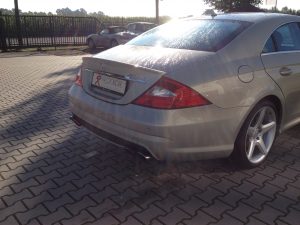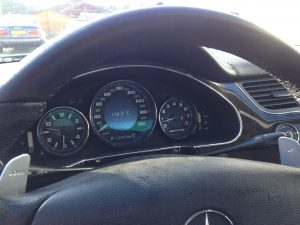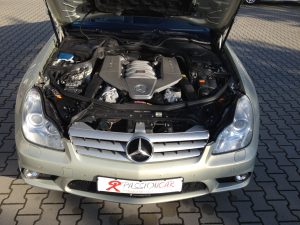Mercedes CLS63 AMG Review & TestDrive this car design is very nice and you see a lot of car brands also building this same style like the audi a7 and the vw Passat CC. I personally like this first gen cls more the the generation after this. If your in the market for a 1e gen AMG CLS Go do a test drive in a 63 AMG but also in a 55 AMG to get the feeling of the to cars and the different character of the engine’s and there power delivery
this Video is al about the Mercedes CLS63 AMG
producing 514HP and 630NM
this car was for sale at Passioncar.de this company is a specialist in rare youngtimers and classics or/and low mileage cars
here is a link to the website have a look for more nice cars
here is a link to the car
https://www.passioncar.de/youngtimer/fahrzeug/mercedes-benz-cls-63-amg-designosilbermet-1handerstlack-2.html
For this was a nice drive to compare this 63 with the 55 i drove earlier this year this 2007 models was just befor the facelift that came in 2008 so only the geabox and engine is different in this car
55 amg is the compressor engine and this is the NA engine so different character. this car is 15kg lighter and is .2 sec faster then the 55 amg
a lot has to do witth the gearbox i think that has 2 more gear so shorter gears will bring more efficient power
i like them both but when your in the market for this car go drive them both and see what character you like the most
Don’t forget to have a look in my AMG playlist where is also a comparison with the CLS55 AMG and separate review of the CLS55 AMG
if there are any questions just ask
JMSpeedshop !
Music Provided by NoCopyrightSounds:
Culture Code & Regoton ft. Jonny Rose – Waking Up
A pretty complete list of engine problems and most common can be found in this link to FCP EURO or below
Common Issues of the Mercedes-Benz M156 Engine:
- Crankcase Breather Valve – The crankcase breather valve fails in two main ways. The first and most common is that the diaphragm on the valve itself deteriorates. The other failure method is that the hose from the crankcase to the valve becomes brittle and develops cracks. Deterioration of this assembly leads to increased burning of oil, misfires, and heavy smoke from the tailpipe.It is common to have a fault code (P0170) that is for fuel trim.
A general maintenance interval for your crankcase breather valve is right around 60,000 miles.
To replace your crankcase breather valve, it’s necessary to remove your intake manifold in tighter engine bays such as the C63. This job should be able to be carried out in about thirty minutes. Although some use this opportunity to install an oil catch can system, we do not see many of these vehicles suffering from excessive oil in the manifold or sludge behind the intake valves.
We have an affordable kit that addresses all of the components you will need to replace when replacing your crankcase breather valve.
- Oil Leaks – The most common source of oil leaks on the M156 are the valve cover gaskets, camshaft solenoid cover gaskets, and oil filter housing gaskets. Valve cover and camshaft solenoid cover gaskets should be replaced concurrently. If these oil leaks are left unattended, they will damage peripheral components such as the alternator, drive belt pulleys, drive belt, air conditioning compressor, and transmission cooling hoses to name a few.
- Camshaft Adjusters – When the camshaft adjusters no longer hold hydraulic pressure, it will manifest itself first as a noise typically at cold start and progress to noise at any engine RPM cold or at operating temperature. This camshaft adjuster rattle is most prevalent on the intake camshaft adjusters and is observed mostly on engine startup.
- Drive Belt Pulleys – All of the pulleys on the Mercedes-Benz AMG M156 engine are a plastic design with a pressed on bearing. Although idler pulley failure is common across most Mercedes-Benz platforms, we recommend checking pulleys for failure symptoms at each oil-change interval. Pulley failure will damage the drive belt, and when that happens, the belt typically damages the coolant breather port on the thermostat. If you let that happen, you will have to replace a thermostat, and thermostat breather line in addition to the drive belt components.
- Cylinder Head Bolts – Most Mercedes-Benz AMG M156 equipped models (up to model year 2012) have cylinder head bolts that have the propensity to break,allowing coolant to enter the combustion chamber. Early warning signs include a low coolant light, misfires, and a check engine lamp. We recommend all engines equipped with the older design bolts be updated. The cutoff for engines not affected by this design flaw is serial number 60-060658.
- Camshaft and Hydraulic Lifters – Camshaft replacement should be considered a regular maintenance task as most camshafts show wear failures around 100,000 miles. Wear occurs most commonly on the left and right intake camshafts and if left unattended, the cam lobe will eat through the hydraulic lifter. Frequent oil changes, using the correct oil viscosity for your climate, and including an anti-wear additive with oil changes are all measures we recommend to protect your engine. Additionally, higher mileage engines should have their oil sent out for analysis periodically or the valve covers should be removed and camshaft lobes inspected for signs of wear.
- Intake Manifold Failure – The intake manifold on the M156 is constructed of a cast magnesium alloy, contains an adjustable length runner assembly, and houses the engine’s twin throttle bodies. The center mounting plate that houses the throttle bodies deteriorate causing rough running particularly at idle.
- Mercedes-Benz AMG M156 Intake Manifold
- Since the intake manifold is quite expensive and often back-ordered, there is an aftermarket option available that just replaces the center-plate.
